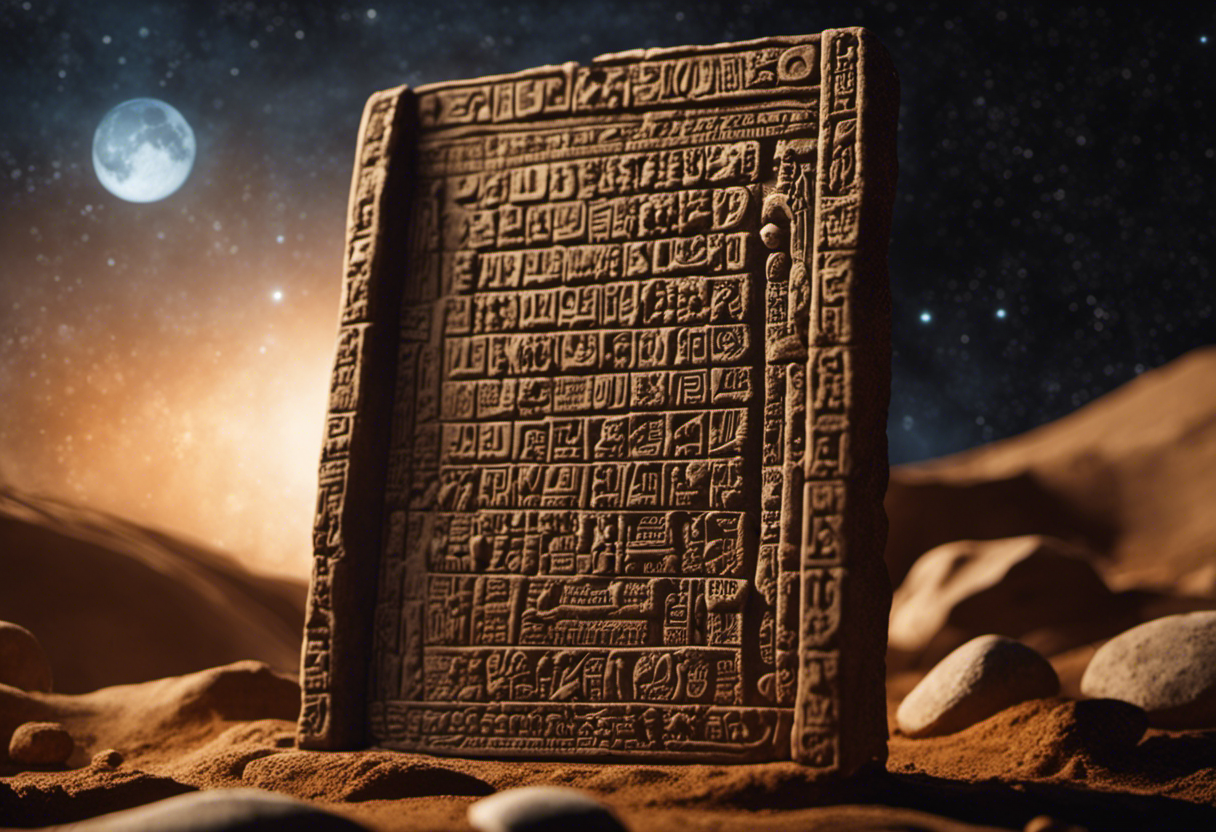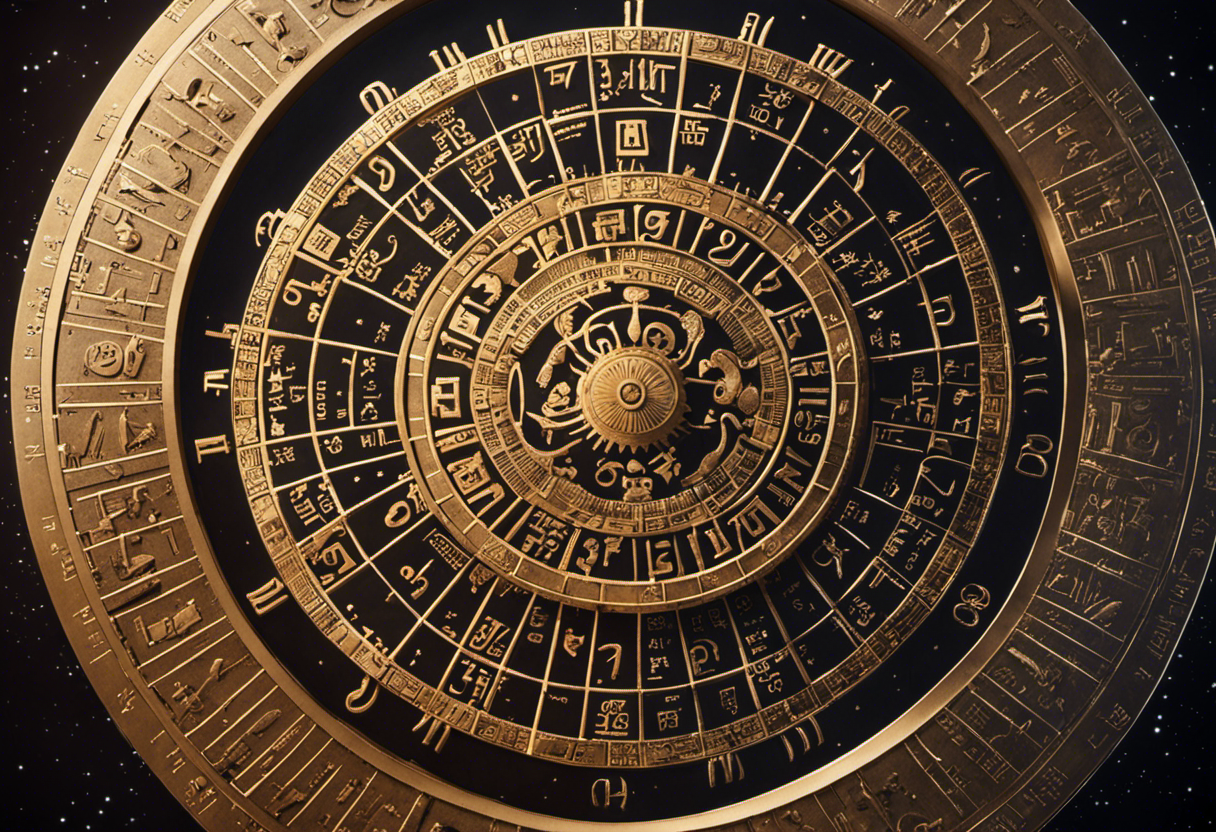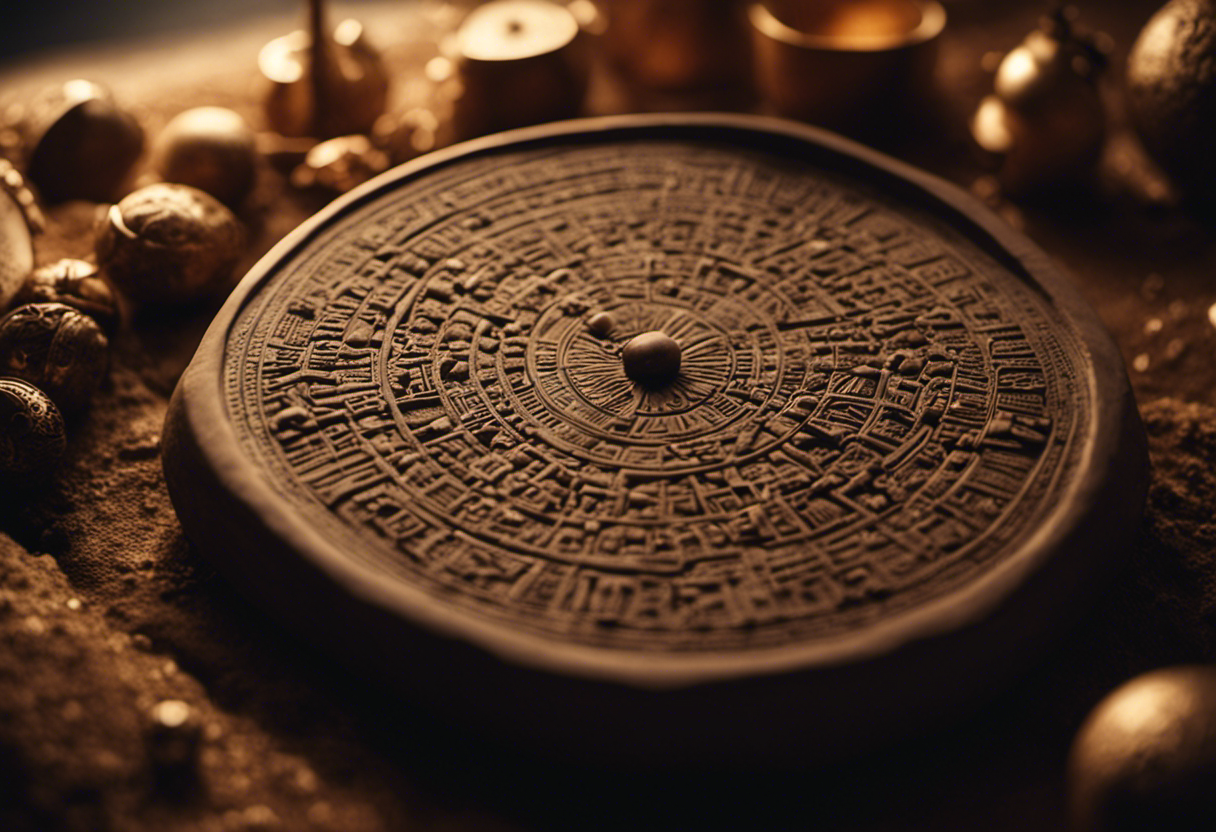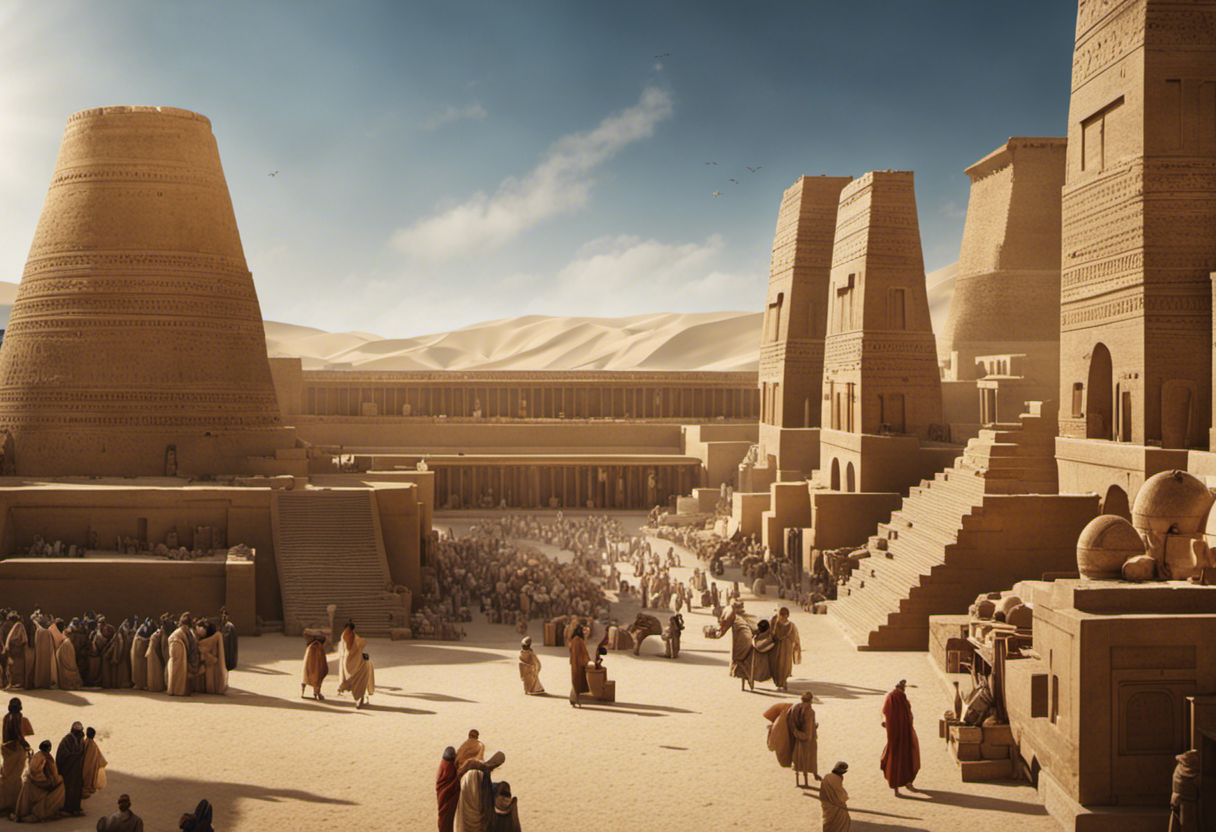In the realm of ancient civilizations, timekeeping played a pivotal role in shaping societies and their daily lives. The Babylonian Calendar, renowned for its intricate principles and unique system, offers an intriguing glimpse into the past.
As we embark on a journey to decipher the current year in the Babylonian Calendar, we unravel the complexities of this ancient timekeeping system and explore its impact on the societies of old.
Join us as we delve into the captivating world of the Babylonian Calendar and its significance in ancient times.
Key Takeaways
- The Babylonian calendar was a lunar-solar calendar system used by ancient Babylonians.
- It consisted of 12 lunar months, with intercalary months added to align it with the solar year.
- The calendar played a crucial role in the daily lives of Babylonian people, determining dates for religious festivals and agricultural activities.
- The Babylonian calendar influenced later calendars, such as the Jewish and Islamic calendars, and the principles of timekeeping systems.
The Babylonian Calendar: A Brief Overview


The article provides a comprehensive overview of the Babylonian calendar, highlighting its significance and key features. The Babylonian calendar was a lunar-solar calendar system that was used by the ancient Babylonians. It was based on the movements of the moon and the sun, and it played a crucial role in the daily lives of the Babylonian people.
One of the main principles of the Babylonian calendar was the concept of lunisolar reckoning. This meant that the calendar was based on both the lunar and solar cycles. The Babylonians believed that the moon had a direct impact on the earth and its seasons. By observing the moon, they were able to determine the length of the months and the year.
The Babylonian calendar also had a significant impact on society. It was used to determine the dates of religious festivals and rituals, as well as the timing of agricultural activities. The Babylonians believed that by following the calendar, they could ensure the favor of the gods and bring prosperity to their communities.
Overall, the Babylonian calendar was a complex and sophisticated system that played a crucial role in the lives of the ancient Babylonians. Its unraveling principles and impact on society highlight the importance of the calendar in shaping their daily lives and cultural practices.
Unraveling the Babylonian Timekeeping System


Our understanding of the Babylonian timekeeping system continues to evolve as scholars uncover new evidence and analyze existing artifacts. The Babylonians made significant advancements in timekeeping, developing a calendar that was based on lunar and solar cycles. This calendar consisted of 12 lunar months, each consisting of 29 or 30 days, resulting in a year of 354 or 355 days. To align the lunar calendar with the solar year, the Babylonians added intercalary months periodically. This system allowed them to accurately predict celestial events, such as eclipses, and to keep track of agricultural seasons.
The historical significance of the Babylonian calendar cannot be overstated. It served as the basis for many later calendars, including the Jewish calendar and the Islamic Hijri calendar. The Babylonians also developed a sexagesimal system of time measurement, dividing the day into 24 hours, each consisting of 60 minutes and each minute consisting of 60 seconds. This system is still in use today, highlighting the enduring influence of Babylonian timekeeping.
Recent research has shed new light on the intricacies of the Babylonian calendar. By studying cuneiform tablets and astronomical texts, scholars have been able to reconstruct the calendar and gain a deeper understanding of how it was used in ancient Babylonian society. These advancements in our understanding have allowed us to appreciate the sophistication and precision of the Babylonian timekeeping system.
Understanding the Principles of the Babylonian Calendar


A comprehensive study is essential to fully grasp and apply the principles of the Babylonian calendar, as it serves as a foundation for various ancient and modern timekeeping systems.
The Babylonian calendar was a lunisolar calendar, meaning it was based on both the phases of the Moon and the position of the Sun. It consisted of 12 lunar months, each beginning with the sighting of a new crescent moon.
However, because the lunar year is shorter than the solar year, the Babylonians had to add an extra month periodically to keep the calendar in sync with the seasons. This intercalation process was a crucial principle of the Babylonian calendar.
Additionally, the Babylonians divided the day into 24 hours, with each hour divided into 60 minutes. This sexagesimal system, based on the number 60, was another fundamental principle that influenced the development of modern timekeeping systems.
Understanding these principles provides insight into the ancient Babylonian way of measuring and organizing time, as well as their significant contribution to the evolution of timekeeping systems throughout history.
Calculating the Current Year in the Babylonian Calendar


Since the Babylonian calendar was based on both lunar and solar cycles, calculating the current year requires a thorough understanding of the intercalation process and the position of the Sun and the Moon. The Babylonian calendar, also known as the lunisolar calendar, was one of the oldest calendars in history and had its historical origins in ancient Mesopotamia.
To calculate the current year in the Babylonian calendar, several calculating methods were employed. One method involved tracking the positions of the Sun and the Moon in the sky. The Babylonians observed the movements of celestial bodies and made astronomical calculations to determine the intercalation of months and years.
Another method involved the use of a mathematical formula known as the Metonic cycle. This cycle, which was developed by the Greek astronomer Meton in the 5th century BCE, allowed for the synchronization of lunar and solar cycles. By using this cycle, the Babylonians could determine the number of intercalary months needed to align the calendar with the solar year.
The Impact of the Babylonian Calendar on Ancient Society


The Babylonian calendar had a significant impact on ancient society in various aspects.
Firstly, it held great cultural significance as it was closely tied to the religious beliefs and practices of the Babylonians.
Additionally, the calendar played a crucial role in agricultural planning, as it helped farmers determine the best time for planting and harvesting crops.
Lastly, the calendar also influenced the scheduling and celebration of festivals and religious events, shaping the social and cultural fabric of the ancient Babylonian society.
Cultural Significance of Calendar
The Cultural Significance of the Babylonian Calendar is evident through its influence on ancient society and its role in shaping cultural practices.
The Babylonian Calendar had both agricultural and societal implications. Agriculturally, the calendar played a crucial role in determining the timing of agricultural activities such as planting and harvesting crops. It helped ancient farmers align their activities with the natural cycles of the seasons, ensuring optimal productivity and food security.
Societally, the Babylonian Calendar served as a means of organizing and coordinating various social and religious events. It provided a framework for scheduling religious festivals, ceremonies, and other important cultural activities. Additionally, the calendar played a role in the establishment of laws and regulations, as it helped determine the timing of legal proceedings and the administration of justice.
Overall, the Babylonian Calendar had a profound impact on ancient society, influencing both agricultural practices and cultural traditions.
Agricultural Planning and Festivals
Our understanding of agricultural planning and festivals in ancient society is greatly enhanced by the impact of the Babylonian Calendar. This ancient calendar system, developed by the Babylonians around the 2nd millennium BCE, played a crucial role in organizing and coordinating agricultural activities and harvest celebrations.
The Babylonian Calendar, based on lunar cycles, provided a framework for farmers to determine the optimal times for planting and harvesting crops. It helped them plan their agricultural activities in accordance with celestial events, such as the phases of the moon and the position of the stars.
Moreover, the calendar also marked important festivals and religious ceremonies that were closely tied to the agricultural cycle. These celebrations served as a way to honor the deities associated with agriculture and seek their blessings for a bountiful harvest.
Influence on Religious Practices
The influence of the Babylonian Calendar on ancient society’s religious practices is evident through the incorporation of important festivals and ceremonies that revolved around the agricultural cycle.
The Babylonians closely observed the lunar cycles, which played a significant role in their religious ceremonies. The calendar consisted of 12 lunar months, with each month beginning at the sighting of a new moon. This lunar-based calendar allowed the Babylonians to mark the changing seasons and plan their agricultural activities accordingly.
The religious ceremonies that were integrated into the calendar included offerings and prayers to ensure a bountiful harvest, as well as celebrations to honor deities associated with fertility and abundance.
The Babylonian Calendar thus not only served as a practical tool for organizing time but also had a profound impact on the religious beliefs and practices of ancient society.
Comparing the Babylonian Calendar to Other Ancient Calendars


The Babylonian calendar shares some similarities with the Egyptian calendar, both being lunisolar calendars which incorporate both lunar and solar elements.
Additionally, the Babylonian calendar had a significant influence on the development of the Mayan calendar, particularly in terms of its mathematical calculations and astronomical observations.
These connections highlight the interconnectedness and exchange of knowledge between ancient civilizations in their pursuit of understanding and measuring time.
Similarities With Egyptian Calendar
In exploring the similarities between the Babylonian and Egyptian calendars, one can observe the shared use of astronomical events to determine the passage of time. Both civilizations relied on the movements of the sun, moon, and stars to mark the passing of days, months, and years.
However, there are also significant differences between the two calendars.
-
The Babylonian calendar was based on a lunar system, with months beginning at the first sighting of the new moon. In contrast, the Egyptian calendar was primarily solar-based, with months consisting of 30 days and an additional 5 or 6 intercalary days to account for the discrepancy between the solar and lunar cycles.
-
The Babylonians used a sexagesimal number system, with a base of 60, which is still seen in our modern measurement of time. On the other hand, the Egyptians used a decimal system, with a base of 10.
-
The Babylonian calendar had a more complex intercalation system than the Egyptian calendar. They would add an extra month intermittently to align their lunar calendar with the solar year, whereas the Egyptians used a fixed pattern for their intercalary days.
These similarities and differences highlight the unique approaches each civilization took in developing their calendars and demonstrate the importance of astronomy in their understanding of time.
Influence on Mayan Calendar
Comparing the Babylonian calendar to other ancient calendars, it is evident that the influence on the Mayan calendar can be seen through their shared use of astronomical events as a basis for timekeeping. The Mayan civilization, known for their advanced understanding of astronomy, developed a complex calendar system that incorporated celestial observations.
This system, much like the Babylonian calendar, relied on astronomical events such as solstices, equinoxes, and the movements of celestial bodies to mark the passage of time. Both civilizations recognized the significance of these events and incorporated them into their respective calendar systems.
This shared emphasis on astronomical observations suggests a possible influence of the Babylonian calendar on the development of the Mayan calendar. Further research and analysis are needed to fully understand the extent of this influence and its implications for both civilizations’ calendar systems.
Modern Applications and Relevance of the Babylonian Calendar


Exploring the practicality of incorporating the Babylonian calendar into contemporary astronomical calculations offers valuable insights into its relevance and potential applications in modern society. While the Babylonian calendar may seem outdated, its unique features and mathematical principles can still be utilized in various ways.
Modern applications of the Babylonian calendar include:
-
Astrology: The Babylonians were skilled astronomers and their calendar was closely tied to celestial events. Incorporating their calendar into modern astrology could provide a new perspective on interpreting celestial phenomena.
-
Historical analysis: The Babylonian calendar can be used to accurately date ancient astronomical observations and events. This can aid in understanding ancient civilizations and their technological advancements.
-
Cultural preservation: The Babylonian calendar is an important aspect of ancient Mesopotamian culture. By studying and incorporating it into modern society, we can preserve and honor this rich heritage.
-
Educational purposes: Introducing the Babylonian calendar in educational settings can help students learn about ancient civilizations, mathematics, and astronomy. It can also promote critical thinking and problem-solving skills.
The Babylonian calendar may not be directly applicable in our day-to-day lives, but its study and incorporation can provide valuable insights into ancient civilizations, celestial observations, and mathematical principles. By embracing the past, we can gain a deeper understanding of the present and pave the way for future advancements.
Conclusion
In conclusion, the Babylonian calendar, with its intricate timekeeping system, played a significant role in ancient society. Its principles and calculations allowed for organized agricultural practices and religious ceremonies.
While other ancient calendars existed, the Babylonian calendar stood out for its accuracy and complexity. Even today, the Babylonian calendar holds relevance as a historical and cultural artifact, reminding us of the ingenuity and importance of timekeeping in human civilization.
Just as the hands of a clock move with precision, the Babylonian calendar continues to tick in our collective memory, reminding us of our shared history.



